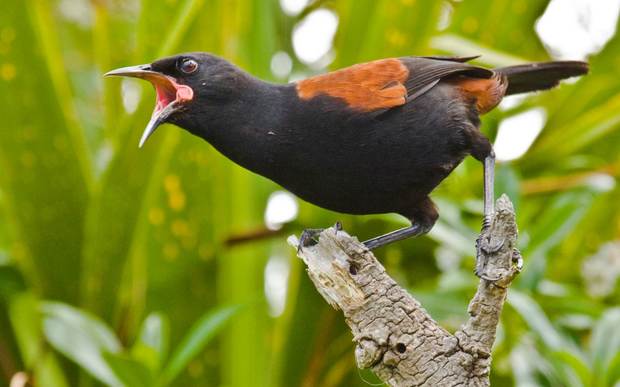Auckland Zoo is celebrating Conservation Week by relocating 10 wild saddlebacks from Tiritiri Matangi Island to its Te Wao Nui forest aviary.
But is that how modern conservation should be celebrating success stories? Dr Kevin Parker, a conservation scientist doesn’t think so.
His work revolves around reintroducing birds to establish wild populations and he has worked with North Island saddlebacks for 12 years. He thinks putting wild animals in a cage is the old way of doing conservation.
“Wild birds are best in wild places. Birds have been shaped by thousands of years of evolution to live in wild places and do their wild things. And if you confine them, it’s a really unnatural situation for them.”
Auckland Zoo says having the birds at the zoo, will encourage people to engage in further conservation about the species. People who may otherwise have no interest in this fascinating bird.
Dr Parker is worried however that the saddlebacks will be very confined.
“It’s like somebody coming into your suburban street taking ten houses and saying all those people fit into one house. They’ll be competition.”
He says there are fourteen wild populations in the North Island that are easily accessible to the public – and that is the environment in which they should be seen.
“There are a lot of opportunities for the public to see saddlebacks if they want to.”
The saddlebacks almost disappeared in the 1960s. The North Island saddleback was reduced to a population of just 500 birds, the South Island species to just 36 birds. There are estimated to be 10000 birds now – a great conservation success story given the bird’s vulnerability to predation.
In the 1960s an ambitious translocation programme started which ultimately saved the bird.
Started by the New Zealand Wildlife Service, and continued by the New Zealand Department of Conservation, and more recently by community-based conservation groups, has increased the global population to at least 10000 birds scattered across 18 islands and five protected mainland sites. North Island saddlebacks are now secure and extinction is very unlikely.
“They’re incredibly vulnerable to predation, they nest in cavities, but also roost in cavities year round. We’re very lucky to still have them actually.”




